Passports in Europe
Passports in Europe are issued by each state individually, e.g. the Netherlands or UK. In general, passports issued in Europe either grant the holder the right of freedom of movement within the European Economic Area (EU and EFTA passports), to those that don't (EU candidate countries and other non-EU European states). The majority of European states are members of the European Union, and therefore issue EU passports.
All passports issued in Europe are B7 size and (ISO/IEC 7810 ID-3, 88 mm × 125 mm). The overwhelming majority of European passports are biometric (![]() ). These include all EU, EFTA, British, and EU candidate passports.
). These include all EU, EFTA, British, and EU candidate passports.
There are also several passports issued by partially-recognised and disputed states, such as Northern Cyprus and Kosovo.
Passports in Europe are issued by individual European states, such as the Netherlands and the UK.
Passports of the European Union
| |||||||||||||||||||||||||||||||||||||||||||||||||
|---|---|---|---|---|---|---|---|---|---|---|---|---|---|---|---|---|---|---|---|---|---|---|---|---|---|---|---|---|---|---|---|---|---|---|---|---|---|---|---|---|---|---|---|---|---|---|---|---|---|
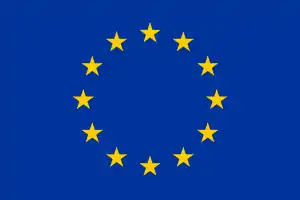 Flag | |||||||||||||||||||||||||||||||||||||||||||||||||
 | |||||||||||||||||||||||||||||||||||||||||||||||||
| Capital | Brussels (de facto)[1] | ||||||||||||||||||||||||||||||||||||||||||||||||
| Largest city | Paris (metropolitan area) Berlin (city proper) | ||||||||||||||||||||||||||||||||||||||||||||||||
| Official languages | |||||||||||||||||||||||||||||||||||||||||||||||||
| Official scripts[3] | |||||||||||||||||||||||||||||||||||||||||||||||||
| Demonym(s) | European | ||||||||||||||||||||||||||||||||||||||||||||||||
| Type | Supranational union | ||||||||||||||||||||||||||||||||||||||||||||||||
| Member states | |||||||||||||||||||||||||||||||||||||||||||||||||
| Government | Intergovernmental and supranational | ||||||||||||||||||||||||||||||||||||||||||||||||
| Formation[4] | |||||||||||||||||||||||||||||||||||||||||||||||||
| 1 January 1958 | |||||||||||||||||||||||||||||||||||||||||||||||||
| 1 July 1987 | |||||||||||||||||||||||||||||||||||||||||||||||||
| 1 November 1993 | |||||||||||||||||||||||||||||||||||||||||||||||||
| 1 December 2009 | |||||||||||||||||||||||||||||||||||||||||||||||||
| 1 July 2013 (Croatia) | |||||||||||||||||||||||||||||||||||||||||||||||||
| 31 January 2020 (UK) | |||||||||||||||||||||||||||||||||||||||||||||||||
| Area | |||||||||||||||||||||||||||||||||||||||||||||||||
• Total | 4,233,262 km2 (1,634,472 sq mi) (7th) | ||||||||||||||||||||||||||||||||||||||||||||||||
• Water (%) | 3.08 | ||||||||||||||||||||||||||||||||||||||||||||||||
| Population | |||||||||||||||||||||||||||||||||||||||||||||||||
• 2020 estimate | |||||||||||||||||||||||||||||||||||||||||||||||||
• Density | 106/km2 (274.5/sq mi) | ||||||||||||||||||||||||||||||||||||||||||||||||
| Currency | Euro (EUR; €; in eurozone) and | ||||||||||||||||||||||||||||||||||||||||||||||||
Website europa | |||||||||||||||||||||||||||||||||||||||||||||||||
The EU itself does not issue ordinary passports, but ordinary passports issued by the 27 member states follow a common format.[6] This includes a burgundy cover (not compulsory: Croatia is the only exception) emblazoned with the title "European Union", followed by the member state's name in their official language(s) (occasionally translation into English and French), their coat of arms, the word "PASSPORT", together with the biometric passport symbol (![]() ).[7] Holders of EU passports are citizens of the European Union and entitled to exercise the rights of that citizenship, e.g. freedom of movement.
).[7] Holders of EU passports are citizens of the European Union and entitled to exercise the rights of that citizenship, e.g. freedom of movement.
Some EU member states also issue non-EU passports to certain people who have a nationality which is not supplemented by European Union citizenship (e.g., Danish nationals residing in the Faroe Islands).
In addition, the European Commission issues European Union Laissez-Passers to the members and certain civil servants of its institutions.[8]
Overview of EU passports
| Member state | Passport cover | Biodata page | Validity | Issuing authority | Latest version |
|---|---|---|---|---|---|
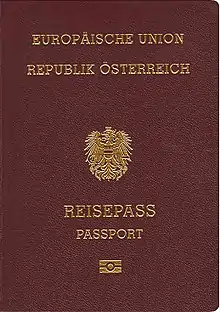 |
|
Municipal registration offices
If abroad, Austrian embassies and consulates |
5 September 2014[9] | ||
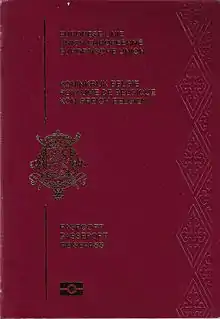 |
Link to image |
|
|
1 May 2014[10] | |
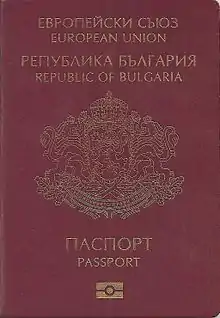 |
Link to image |
|
Ministry of Interior Affairs | 29 March 2010 | |
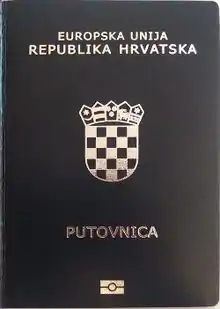 |
Link to image |
|
|
3 August 2015 | |
 |
Link to image |
|
|
13 December 2010 | |
 |
Link to image |
|
|
1 September 2006 | |
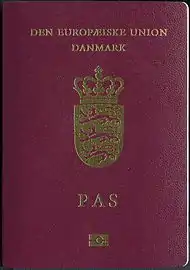 |
Link to image |
|
|
1 January 2012 | |
 |
Link to image |
|
|
1 June 2014[12] | |
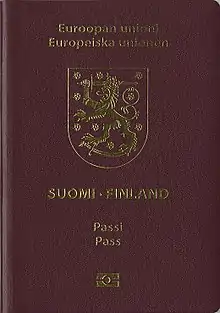 |
Link to image |
|
1 January 2017 | ||
 |
Link to image |
|
1 January 2017 | ||
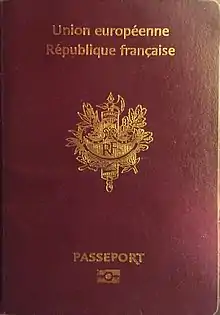 |
Link to image |
|
|
12 April 2006 | |
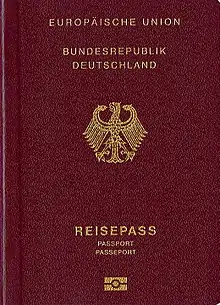 |
Link to image |
|
Municipal registration offices
If abroad, German embassies and consulates, including some honorary consulates |
1 March 2017 | |
 |
Link to image |
|
National Passport Centre ("Διεύθυνση Διαβατηρίων/Αρχηγείο Ελληνικής Αστυνομίας") | 28 August 2006 | |
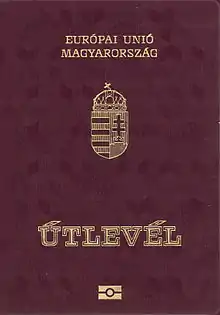 |
Link to image |
|
Registration Office (Nyilvántartó Hivatal) | 1 March 2012 | |
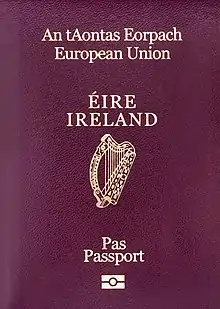 |
Link to image |
|
Consular and Passport Division of the Department of Foreign Affairs | 3 October 2013 | |
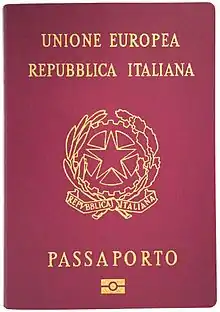 |
Link to image |
|
Minister of Foreign Affairs through | 20 May 2010 | |
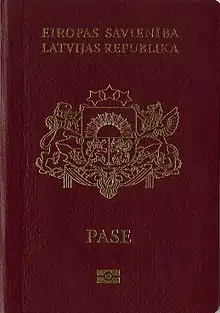 |
Link to image |
|
|
29 January 2015[17] | |
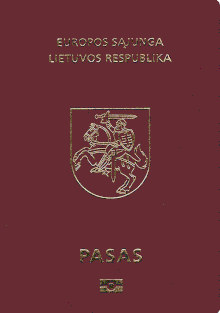 |
Link to image |
|
27 January 2011 | ||
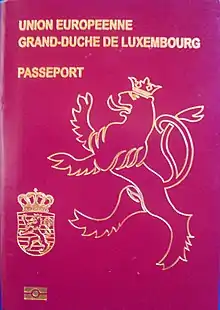 |
Link to image |
|
Bureau des passeports | 16 February 2015[10] | |
| Link to image |
|
Passport & Civil Registration Directorate | 29 September 2008 | ||
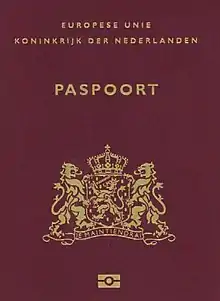 |
Link to image |
|
|
23 December 2017 | |
 |
Link to image |
|
|
5 November 2018 | |
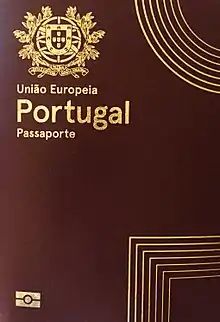 |
Link to image |
|
10 July 2017 | ||
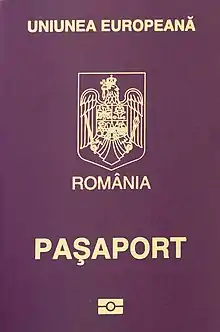 |
Link to image |
|
Ministry of Internal Affairs (General Directorate for Passports) | 12 January 2019 | |
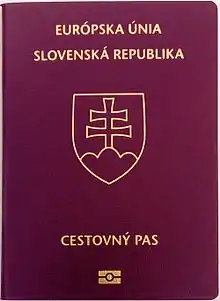 |
Link to image |
|
|
26 November 2014 | |
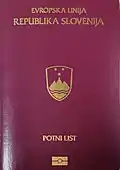 |
Link to image |
|
12 December 2016 | ||
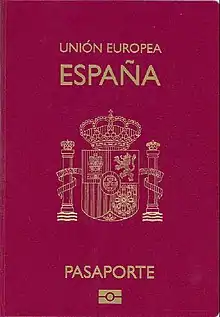 |
Link to image |
|
2 January 2015 | ||
| Link to image |
|
|
2 January 2012 |
Passports of European Union candidate countries
European Union candidate states | |
|---|---|
 EU candidate states shown in cyan. | |
| Candidate states | |
Since the establishment of the European Economic Community, previous enlargements have seen the founding Inner Six states of 1958[4] grow to the EU's current 27 member-states. Currently, there are five recognised candidates for future membership of the EU: Turkey (applied in 1987), North Macedonia (applied in 2004), Montenegro (applied in 2008), Albania (applied in 2009), and Serbia (applied in 2009). All have started accession negotiations.[19]
Unlike EU and EFTA passports, nationals carrying passports of EU candidate countries do not have free movement rights and are required to possess appropriate visas.
Overview of passports issued by EU candidate countries
| Candidate state | Passport cover | Biodata page | Validity | Issuing authority | Latest version |
|---|---|---|---|---|---|
.jpg.webp) |
Link to image |
|
Ministry of the Interior | 2015 | |
 |
Link to image |
|
Ministry of the Interior[20] | 2008 | |
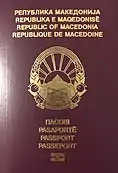 |
Link to image |
|
Ministry of the Interior[21] | 2019 | |
 |
Link to image |
|
Ministry of the Interior[22] | 7 July 2008 | |
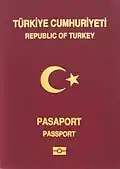 |
Link to image |
|
Ministry of Interior[23] | 1 April 2018 |
Passports of EFTA member-states
European Free Trade Association | |
|---|---|
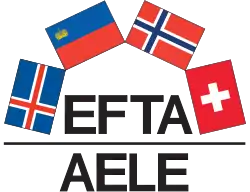 Logo
| |
 | |
| Secretariat | Geneva |
| Largest city | Oslo |
| Official working language | English |
| Official languages of member states | |
| Type | Regional organization, Free-trade area |
| Member states | |
| Area | |
• Total | 529,600 km2 (204,500 sq mi) |
| Currency | |
Website efta | |
Like the EU, EFTA itself does not issue ordinary passports. It also does not issue any guidelines for a common passport design and format. The EFTA member states participate in the European Single Market and are part of the Schengen Area.[24] EFTA member-states include Iceland, Norway, Switzerland, and Lichtenstein.
In accordance with the EFTA convention, nationals of EFTA member-states enjoy freedom of movement in each other's territory.[25] EFTA nationals also enjoy freedom of movement with the EU. EFTA nationals and EU citizens and are not only visa-exempt but are legally entitled to enter and reside in each other's countries. The right of freedom of movement is defined by the Citizens’ Rights Directive, which defines the right of free movement for citizens of the European Economic Area (EEA),[26][27] which includes the three EFTA members Iceland, Norway and Liechtenstein and EU member-states. Switzerland, which is a member of EFTA but not of the EEA, is not bound by the Directive but rather has a separate bilateral agreement on free movement with the EU.[28]
| Member state | Passport cover | Biodata page | Validity | Issuing authority | Latest version |
|---|---|---|---|---|---|
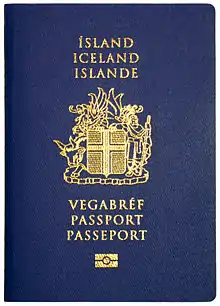 |
Link to image | 10 years (adults) | Registers Iceland(Þjóðskrá Íslands) | 23 May 2006[29](biometric)
June 2013[30](current version) | |
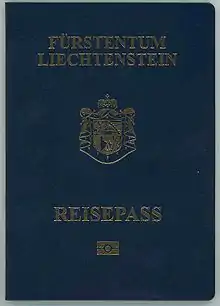 |
Link to image |
|
Ausländer- und Passamt | 26 October 2006[31] | |
 |
Link to image |
|
Norwegian Police Service | 19 October 2020[32] | |
 |
Link to image |
|
Cantonpassport office | 1 March 2010 |
British Passports
The UK and European Dependencies | |
|---|---|
 | |
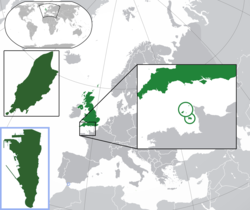 The UK (centre) and European Dependencies - Isle of Man (top left), Bailiwicks of Guernsey and Jersey (middle right), and Gibraltar (bottom left) | |
| Largest city | London |
| Official language and national language | English |
| Recognised Regional Languages | |
| Type | Sovereign state and depencies |
| Sovereign state, Crown Dependencies, and Territory | |
| Currency | Pound sterling[note 3] (GBP) |
Following the end of the UK's EU withdrawal transition period on 31 December 2020, British passports no longer grant holders the right to free movement within the EEA. British passports are issued to all types of British nationals. These include British Nationals (Overseas), British Overseas Territories Citizens (BOTCs), and British citizens resident in the Crown Dependencies.
The UK also participates in the Five Nations Passport Group, along with Canada, Australia, New Zealand, and the US.
In Europe, British passports are issued to British citizens, BOTCs in Gibraltar, and British citizens resident in the Crown Dependencies (Jersey, Guernsey, and the Isle of Man).
Overview of British passports
| Country | Passport cover | Biodata page | Validity | Issuing authority | Latest version |
|---|---|---|---|---|---|
| Link to image |
|
HM Passport Office | March 2020 | ||
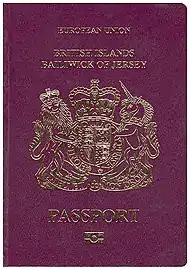 |
Link to image | October 2015 | |||
 |
Link to image | ||||
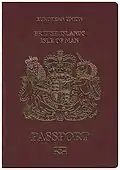 |
Link to image | ||||
.jpg.webp) |
Link to image | Gibraltar Civil Status and Registration Office |
Other European Passports
Overview of other European passports
| Member state | Passport cover | Biodata page | Validity | Latest version |
|---|---|---|---|---|
 |
Link to image | 10 years (adults) | 16 July 2012 | |
 |
Link to image | 1 year: children under age of 1
3 years: children under age of 3 5 years: children under age of 18 10 years: Adults |
1 September 2013 | |
 |
Link to image | 10 years | 15 May 2006 | |
| Link to image | Link to image | 1 October 2014 | ||
 |
Link to image | 10 years: adults
5 years: children |
1 January 2012 | |
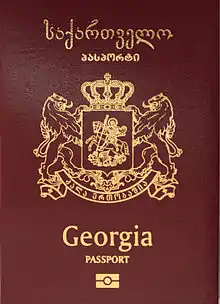 |
Link to image | 26 February 2010 | ||
 |
Link to image | 10 years | 1 January 2009 | |
| Link to image | Link to image | 10 years: Adult
5 years: Child |
1 January 2013 | |
| Link to image | Link to image | |||
 |
Link to image | 1 August 2014 | ||
| Link to image | 5 years | 26 October 200 | ||
 |
5 years | |||
 |
Link to image | 10 years | 1 March 2010 | |
| Link to image | Link to image | 10 years: over 14
5 years: aged 3–14 3 years: under 3 |
12 October 2006 | |
 |
||||
 |
||||
 |
Link to image | 10 years: adults
4 years: children |
1 January 2015 | |
 |
Link to Image |
See also
- Visa requirements for European Union citizens
- Citizenship of the European Union
- National identity cards in the European Economic Area
- Passports of the EFTA member states
- Passports of European Union candidate states
- Five Nations Passport Group
- Visa policy in the European Union
- Schengen Area
- European Union laissez-passer
- British Passport
Notes
- The 24 languages are equally official and accepted as working languages. Three of them – English, French and German – have the higher status of procedural languages and are used in the day-to-day workings of the European institutions.[2]
- Extinct language.
- Some of the devolved countries, Crown dependencies and British Overseas Territories issue their own sterling banknotes or currencies, or use another nation's currency. See List of British currencies for more information
References
- Cybriwsky, Roman Adrian (2013). Capital Cities around the World: An Encyclopedia of Geography, History, and Culture: An Encyclopedia of Geography, History, and Culture. ABC-CLIO. ISBN 978-1-61069-248-9.
Brussels, the capital of Belgium, is considered to be the de facto capital of the EU
- "European Commission – Frequently asked questions on languages in Europe". europa.eu.
- Leonard Orban (24 May 2007). "Cyrillic, the third official alphabet of the EU, was created by a truly multilingual European" (PDF). europe.eu. Retrieved 3 August 2014.
- Current Article 1 of the Treaty on European Union reads: "The Union shall be founded on the present Treaty and on the Treaty on the Functioning of the European Union. Those two Treaties shall have the same legal value. The Union shall replace and succeed the European Community".
- "Population on 1st January by age, sex and type of projection". Eurostat. Retrieved 1 February 2020.
- "EUR-Lex - 41981X0919 - EN".
- "L_2004385EN.01000101.xml". eur-lex.europa.eu.
- European Council regulations covering the issue of EULF documents, dated 17 December 2013, accessed 11 October 2016.
- "Council of the European Union - PRADO - AUT-AO-02002". consilium.europa.eu. Retrieved 2017-08-02.
- "Home". www.consilium.europa.eu.
- "CIVIL REGISTRY AND MIGRATION DEPARTMENT - Civil Registry Section". www.moi.gov.cy.
- "Estonian citizen's passport". Archived from the original on 16 February 2015. Retrieved 15 February 2015.
- "Council of the European Union - PRADO - FIN-AO-05002 - <Outside front cover>".
- "Polisen.ax - Pass". www.polisen.ax.
- "Passaporto per i minori". Poliziadistato.it. Retrieved 2014-03-10.
- "Ministero degli Affari Esteri - Documenti di Viaggio - Passaporto". Esteri.it. Retrieved 2014-03-10.
- DELFI (29 January 2015). "Jaunā parauga Latvijas pilsoņu pases dizainu izstrādājuši PMLP speciālisti un vācu dizaineri".
- "Paspoort wordt 10 jaar geldig". Rijksoverheid.nl. 2012-09-28. Archived from the original on 7 April 2014. Retrieved 2014-03-10.
- "EU candidate status for Albania and North Macedonia". European Commission. 25 March 2020. Retrieved 25 March 2020.
- Postupak i potrebni dokazi za izdavanje ličnih dokumenata -PASOŠ
- "Archived copy". Archived from the original on 4 April 2008. Retrieved 13 June 2008.CS1 maint: archived copy as title (link) Издавање на патна исправа
- "Archived copy". Archived from the original on 31 August 2010. Retrieved 2013-01-08.CS1 maint: archived copy as title (link) ПУТНА ИСПРАВА – ПАСОШ
- "İçişleri Bakanlığı'nın görev ve yetkileri belirlendi". Anadolu Agency. Retrieved 22 July 2018.
- "The European Free Trade Association". efta.int. efta.int. Retrieved 12 December 2014.
- "Short Overview of the EFTA Convention". Retrieved 29 November 2017.
- "EUR-Lex - 32004L0038R(01) - EN - EUR-Lex". Eur-lex.europa.eu. Retrieved 25 November 2017.
- Decision of the EEA Joint Committee No 158/2007 of 7 December 2007 amending Annex V (Free movement of workers) and Annex VIII (Right of establishment) to the EEA Agreement, 2008-05-08, retrieved 2021-01-01
- "EUR-Lex - 22002A0430(01) - EN". Official Journal L 114 , 30/04/2002 P. 0006 - 0072. Retrieved 2020-12-19.
- "Council of the European Union : PRADO - ISL-AO-03001". Consilium.europa.eu. Retrieved 12 August 2018.
- "Þjóðskrá Íslands - Algengar spurningar". Archive.today. 22 September 2015. Archived from the original on 22 September 2015. Retrieved 12 August 2018.
- "Council of the European Union : PRADO - LIE-AO-02001". Consilium.europa.eu. Retrieved 12 August 2018.
- "Nå er ny versjon av passet her" (in Norwegian Bokmål). Norwegian Police Service. Retrieved 19 October 2020.